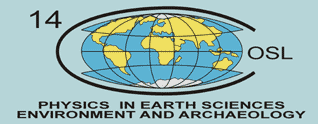Radioactivity Measurements Laboratory
Using Cs-137
Introduction
Soil erosion is a serious environmental problem. Traditional methods used to measure soil erosion are time consuming and the results obtained for an experimental plot are usually incomparable with one another. The use of 137Cs to measure soil erosion overcomes some of the limitations of the traditional methods. These methods are a valuable alternative compared to the traditional methods.
The first attempts to using 137Cs measurements to estimate soil erosion were carried out in the 1960-ties and since then ceasium-137 has been used to study soil erosion and deposition. Caesium 137Cs is a fission product, it is a gamma emitter with energy of 661.6 keV and its half-life is 30.02 years. These properties make the 137Cs isotope a valuable tracer of soil erosion in the medium term. In addition, the counting of the sample is very easy. For the last 40 years, the fallout of 137Cs has been widely used as environmental tracer to study soil erosion.
The 137Cs method to study soil erosion is based on the comparison of the 137Cs inventories for a sampling point with a reference inventory. The reference inventory presents the local input fallout of 137Cs. This means that for a reference site neither erosion nor deposition of soil occurred. The activity of 137Cs in soil samples could be measured by means of gamma spectrometry. Generally, in a place where soil erosion occurs, the 137Cs inventory is smaller than the reference inventory. On the other hand, for soil deposition area the 137Cs inventory is greater than the reference inventory. This simple comparison allows recognizing erosion and deposition areas; however, to obtain quantitative estimation of soil erosion one of the relationships should be used. Those relationships allow converting 137Cs data into erosion rate data.



